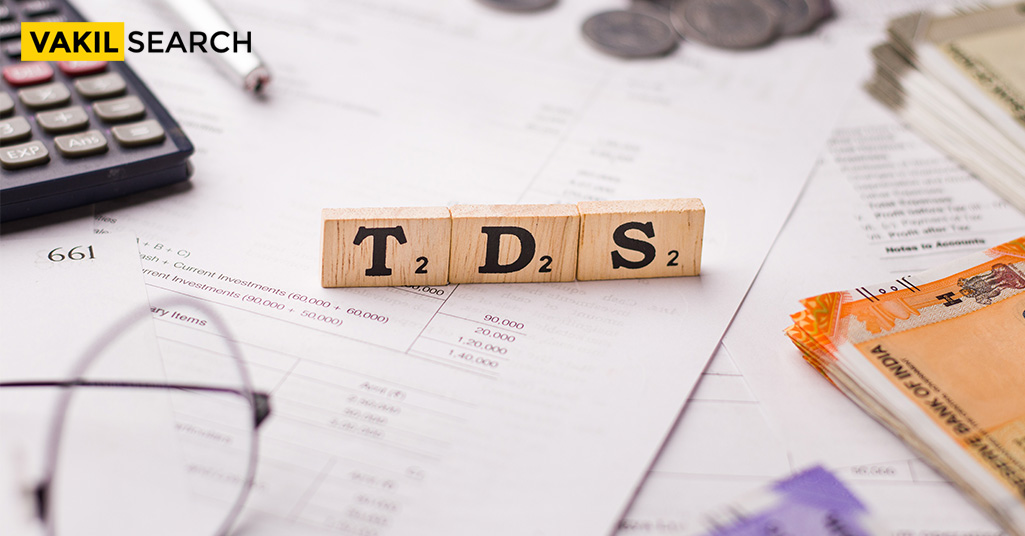When giving a brief on TDS, we should add, What is TDS Payment Challan? What are the types of It? Then we speak about How to Make a Correct Challan Payment? A step-wise process to Follow when making Challan Payment.
TDS is a form of indirect tax and was implemented to collect tax from the source of income. While dealing with TDS payments, it is essential to first understand the concept of deductee and deductor. A deductee is a person who is required to make a defined payment to another person, whereas a deductor is a person who must deduct tax at the source and send it to the Central Government. The deductee whose income tax has been deducted at source is entitled to a rebate for the amount deducted based on the deductor’s Form 26AS for the TDS certificate.
The Central Government helps to ensure that deductees whose income has been taxed at the source can get a refund or credit for the amount deducted on Form 26 AS (Annual Statement). This form essentially provides all of the information about annual TDS and refunds. Deductees can then file their TDS payment return and claim the tax deducted from their income.
What Is TDS Payment Challan?: Who Can File a TDS?
All assessees who fall within the Income Tax Department’s tax slab must file a TDS return. TDS returns must be e-filed, which can be done through the official Income Tax e-filing system or valid tax consultants and tax filing agencies. Organisations and employers can TDS returns with a valid Tax Deduction and Collection Account Number (TAN). TDS must be filed for the following payments, as specified by the Income Tax Act:
- Payment of salary
- Any profits derived from winning riddles, lotteries, or other similar games.
- Commission d’assurance
- Any income made from income on securities.
- Payments are paid to the National Savings Scheme and any other comparable programmes.
Is the TDS Rate Same for Everyone?
There might be misconceptions regarding the rate of TDS applicable. There is no uniformity concerning the rate of TDS applied. Different rates of TDS apply to different categories. Taxes are deducted at the rates indicated in the TDS Act or the First Schedule to the Finance Act. However, when making payments to non-residents, the withholding tax rates stipulated in the Double Taxation Avoidance Agreements must also be considered.
TDS has a much broader application than many people realise. It applies to resident Indians, non-resident Indians, domestic companies, and multinational companies operating in India. The TDS percentage can range between 1% and 30% depending on your income source. In certain rare circumstances, it may even reach 50%.
Also, it is levied not only on your earnings but also on your investments and any gains on your fixed assets. As a result, you must be aware of TDS rates and their applicability when planning your investments. Tax is deductible at the point of purchase, even on large purchases such as a new home.
What Is TDS Payment Challan?
A TDS challan is a form used to deposit TDS with the government. It is a single challan for submitting taxes collected under the various provisions of the Income Tax Act. If the assessee wishes to pay TDS without a challan, the amount must be paid on the day it was collected.
There are primarily two TDS Payment challans that are used for filing TDS, as discussed below.
-
281 Challan
Corporates and non-corporate institutions use tds challan 281 to deposit TDS or TCS (Tax Collected at Source) with the government. When selling certain commodities, sellers must collect TDS or TCS from buyers at the point of sale. The tds challan 281 can be submitted in two ways: online and offline. The challan payment can be made either online or through select institutions, and once the challan is filled, a unique challan identification number (CIN) is issued by the government.
-
280th Challan.
Challan 280 is used to submit income tax payments for Advance Tax, Self-Assessment Tax, Surcharge, Regular Assessment Tax, Tax on Distributed Profits or Income, and others. Challan 280 can also be paid through both online and offline modes.
Prerequisites for Uploading TDS Statement:
Before you start to pay TDS online, a checklist should be gone through.
- To upload TDS, the user should hold a valid TAN and be registered on the e-Filing portal.
- The statement should be prepared using the Return Preparation Utility (RPU) tool and must be validated using the File Validation Utility (FVU).
- A valid DSC must be registered in e-Filing.
- Pre validate Principal Contact’s, i.e., “Bank Account/Demat Account Details” or link and Principal Contact’s PAN number with Aadhaar.
How To File a TDS?
According to Section 206 of the Income Tax Act, all business and government deductors must file their TDS returns on an electronic medium (i.e., e-TDS returns). Filing an e-TDS return is, however, optional for all other deductibles. An e-TDS payment should be prepared under Section 206 of the Income Tax Act in compliance with the CBDT’s scheme dated 26.8.03 for electronic submission of TDS returns.
The following is a step-by-step guide to filing TDS returns online.
- To begin, Form 27 A with multiple columns must be completed, and, in the case of a paper copy of the form, it must be checked along with the E-TDS return that has been filed electronically.
- The tax deducted at the source and the total amount paid must be appropriately filled out and totalled in the following step.
- The organisations’ TANs must be listed on Form 27 A. The verification process will be complicated if the TAN provided is wrong.
- The relevant challan number, mode of payment, and tax details must be included when filing TDS returns. There will be a mismatch if the challan number or payment date is incorrect, and the TDS reports will need to be filed afresh.
- The basic form used for filing the e-TDS must be used to ensure consistency. The 7-digit BSR must be entered to facilitate the tallying procedure.
- TDS returns must be physically submitted to the TIN FC, which NSDL maintains. In the case of online filing, they can be submitted on the NSDL TIN’s official website.
- A token number or a provisional receipt is issued if the information is correct. This is proof that a TDS return was filed.
- In the event of rejection, a non-acceptance memo is provided along with the cause for the denial, and the returns must be submitted again.
How can VakilSearch help you?
If the above filing method has driven you insane, we offer simplified options. Our representatives will help you from the beginning of the return preparation process to the end of the reimbursement process. VakilSearch offers services like calculating TDS payments and submitting the TDS return electronically. We also ensure that the entire process is done in compliance with government regulatory requirements. Contact us now.
Also, Read:










